
During its earlier years, the Honda CR-V nameplate was known for its highly-potent gasoline engine — making it one of the popular sport utility vehicles (SUV) in the local market during the 90’s (and early 2000’s).
However, as time went by, the brand threw a diesel-powered option in the mix, making the vehicle more appealing to Filipinos. The move led to the gas-fed variant being offered as the model's entry-level trim.
And we all know what happens to base-level models: numerous features getting trimmed down in the process.
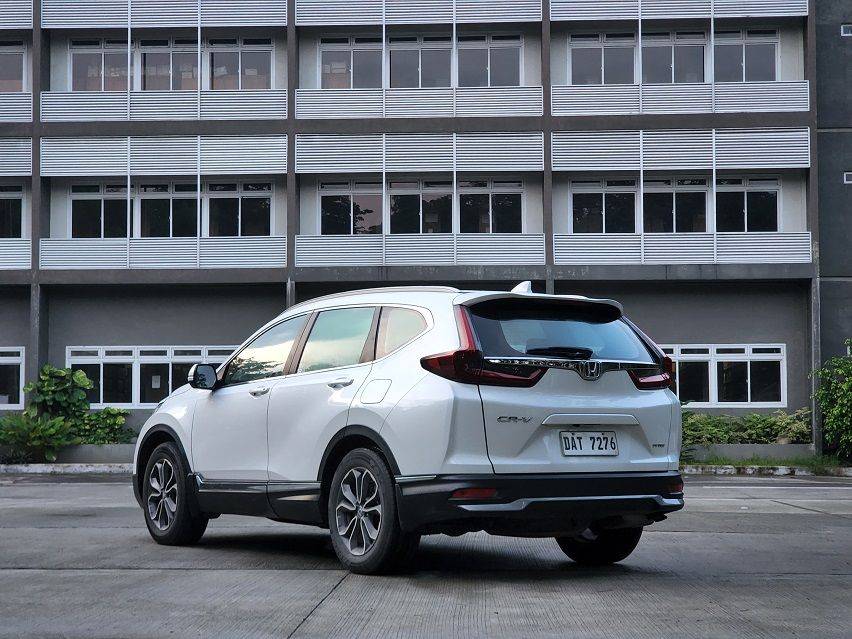
But should we expect the same for the Honda CR-V 2.0 S CVT? Here’s what we discovered during a test drive.
The Honda CR-V 2.0 S CVT is 4,623mm long, 1,855mm wide, and 1,658mm tall, with a 2,662mm wheelbase. Despite such proportions, the entry-level CR-V can make tight U-turns, thanks to its 5.5-meter turning radius.
The five-seater crossover has a cargo capacity of 522 liters behind the second row, giving more than ample space for a family’s supply of groceries, or luggage space for a weekend road trip.

Still looking the same with its pre-updated version, the spruced-up Honda CR-V 2.0 S CVT still has the same headlamp with daytime running lights and L-shaped tail lamp design (all on LED) complemented by the chrome details on its badges, front grille, belts on the side and rear fascia.
The vehicle sits on 18-inch wheels, which is shared with the upper two trims, the SX Diesel 9AT AWD and S Diesel 9 AT.
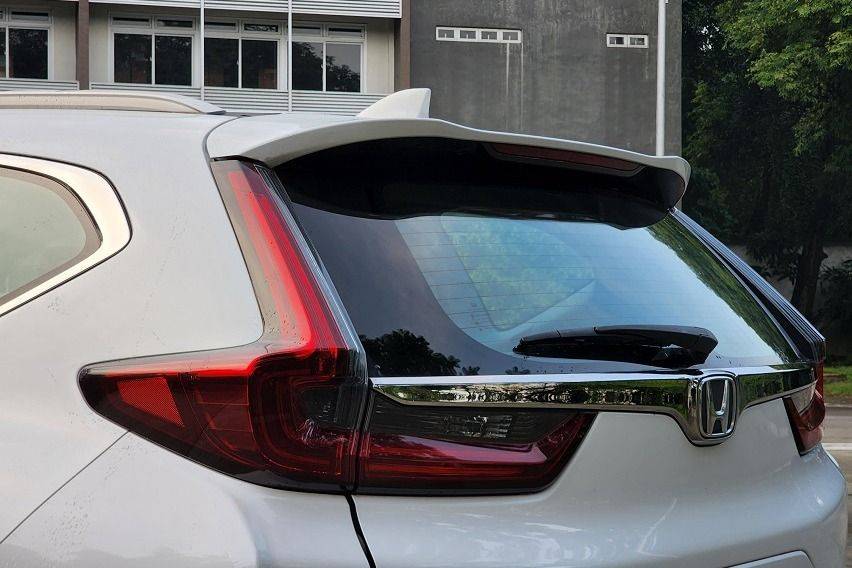
To add, the vehicle comes with shark fin antenna and a tailgate spoiler.
The vehicle greets occupants with a very familiar cabin: the leather seats are still styled the same. Understandably, the front seats of the Honda CR-V 2.0 S CVT are not electronically-adjustable.
Similar to the higher options, the SUV is tailored with leather trimmings on the steering wheel. Adding a dash of elegance inside the Honda CR-V 2.0 S CVT is the black piano key accent that runs across the dashboard.
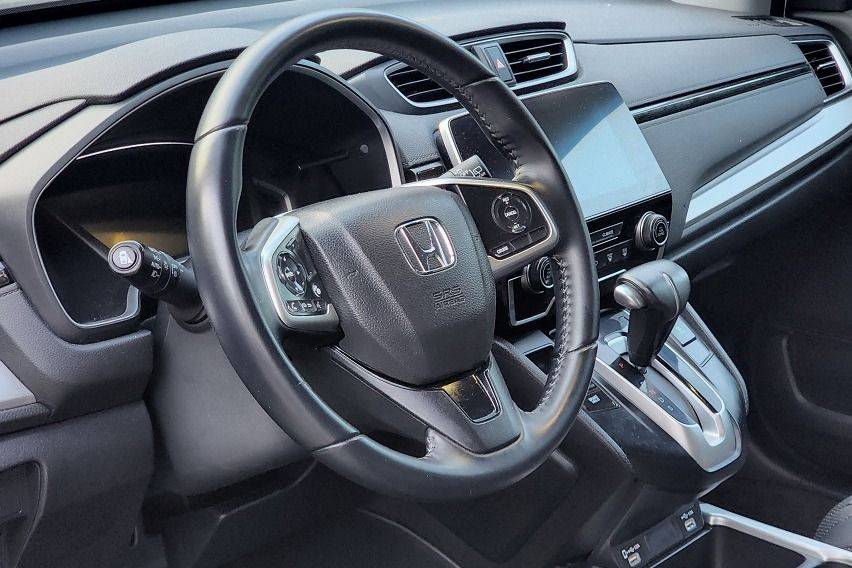
Other similarities of the entry-level with SX and S trims are the seven-inch touch-screen display audio (small compared to its competitors of the segment) with Android Auto, Apple Carplay, Bluetooth and USB connectivity, full-color instrument panel that features a tripmeter, driver attention monitor, audio and hands-free telephone, illuminated sunvisors and USB ports in the rear.
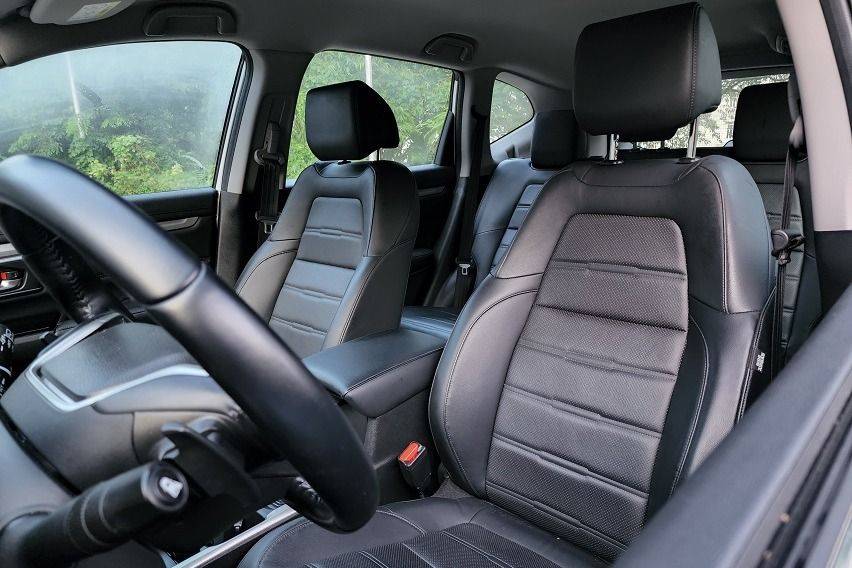
The Honda CR-V 2.0 S CVT variation, which is the only five-seater offering in the local CR-V lineup, comes with a tonneau cover.
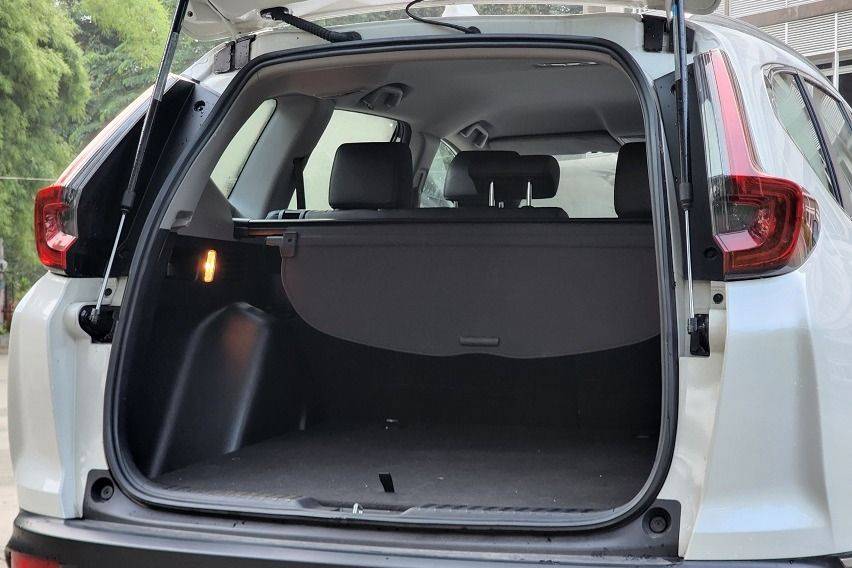
Powering the Honda CR-V 2.0 S CVT is a single overhead cam, four-cylinder 16-valve engine that can deliver a peak output of 152 horses and 189Nm of torque. The abovementioned powertrain passed Euro4 emission ratings.
Assuring smooth shifting for the front-wheel-drive SUV is the continuously variable transmission while providing the stopping power are the vehicle’s disc brakes on all four wheels.
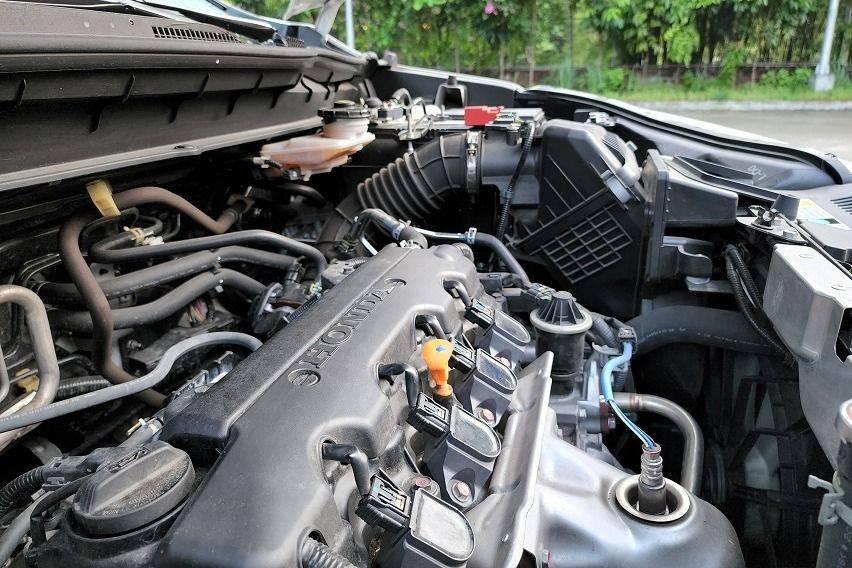
Helping the driver get the most of its 57-liter fuel capacity are the Eco Assist system (which is made up of the Econ mode button and coaching light). During the test drive, the Honda CR-V 2.0 S CVT had around 11-12 kilometers-per-liter rating after covering a combination of city roads and highways.
While it has paddle shifters that would give the driver a sporty vibe, the shift delay serves as a reminder that it is built for coziness.
Driven around Metro Manila, the Honda CR-V 2.0 S CVT sure beats its pickup-platform rivals in the segment when it comes to comfort as its suspension absorbs the output rough patches of roads well — a famous signature under the badge.
For its nooks and crannies, the vehicle comes with four cup holders, four bottle holders, and side pockets on all four doors.
Although the Honda Sensing system is absent on the Honda CR-V 2.0 S CVT, it still comes with a wide array of safety and security technologies namely the Agile Handling Assist, Driver Attention Monitor, vehicle stability assist, hill start assist, anti-lock braking system with electronic brakeforce distribution, emergency stop signal, low tire pressure warning, child safety lock, and seatbelt reminder as well as the front passenger, side and curtain airbags, lane watch camera, and multi-view reverse camera with dynamic guidelines found on the higher variations.
Had Honda fitted a panoramic sunroof on the 2.0 S CVT, buyers would have a hard time choosing between it and the top-of-the-line offering (which is priced at P2.238 million).
Given the current retail price difference on fuel where gasoline burns a deeper hole into one’s pocket compared to diesel, the Honda CR-V 2.0 S CVT (wearing a sticker price of P1.738 million) is a good consideration.
Thanks to the Honda CR-V 2.0 S CVT, buyers need not to lower their standards when they go for base trims.
Photos from Ruben D. Manahan IV
Also read:
Honda Cars PH reveals updated CR-V
First look: All-new Honda City and new CR-V
Honda CR-V Wins Two Major Awards at ASEAN NCAP Grand Prix Awards 2018
Copyright © Carmudi 2014-2025. All Rights Reserved.